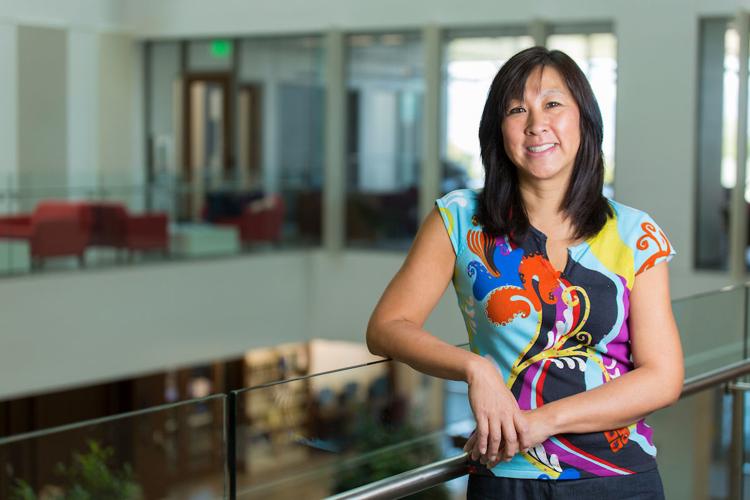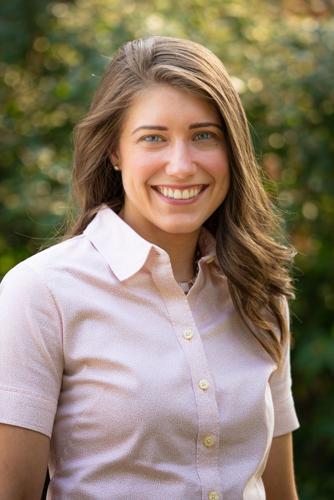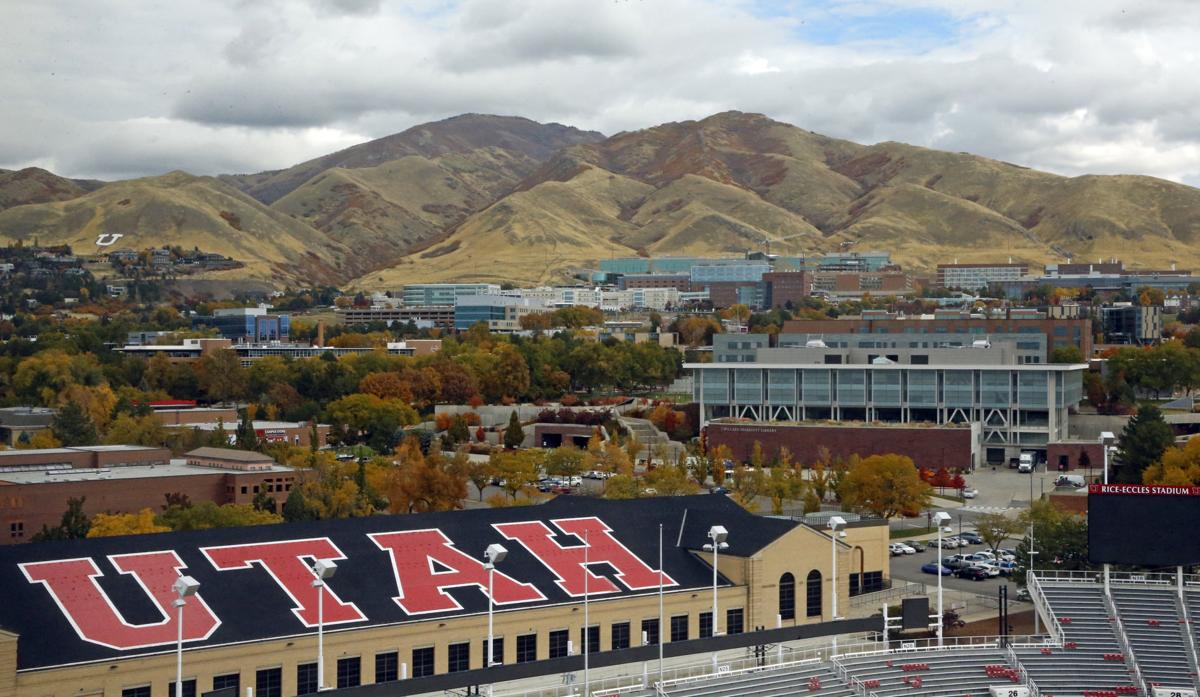This is Part 4 of the Arizona Daily Star’s six-part look into universities’ efforts to enforce and improve Title IX, a federal law that prevents gender discrimination. The Star partnered with Solutions Journalism Network to travel to schools that have made recent changes to their Title IX programs in response to crisis or on their own volition.
Universities across the country have taken steps in recent years to centralize the handling of discrimination allegations against students and faculty and to act with consistency.
At the University of Utah, that's the way it's always been done.
Utah's Office of Equal Opportunity, Affirmative Action and Title IX has long been responsible for the school's nondiscrimination policies, and also handles complaints regarding sexual misconduct, said Sherrie Hayashi, Utah's Title IX coordinator and director of the Office of Equal Opportunity and Affirmative Action.
Despite avoiding the lawsuits involving sexual misconduct that have plagued other schools, Utah administrators have not rested on their laurels. In February 2017, Utah revised its nondiscrimination policy in order to make it more clear, easier to find and follow, and applicable across the university. The change realigned multiple codes and policies to focus on the school's commitment to creating an environment that's free from discrimination and sexual misconduct.
Hayashi said the review of Utah's policies was prompted by the reports and findings coming out of other schools, which she said provided direction as to what the federal government was seeking in terms of Title IX and nondiscrimination prevention.

Sherrie Hayashi, University of Utah’s Title IX coordinator and director of the Office of Equal Opportunity and Affirmative Action.
"All of us wanted to make sure that our policies were consistent with Title IX," Hayashi said. "Not that they weren't previously."
Under Utah's updated policy, students can bring an adviser with them to interviews following the filing of a complaint and can participate in Skype interviews if they're unable to appear in person. Campus employees have an obligation to notify the Office of Equal Opportunity if a student or subordinate discloses that they've experienced sexual misconduct.
Episode 4: Utah's Title IX revision shields students' safety
The change didn't alter the process for handling complaints; rather, Utah officials say, it clarified the way the policies work. Representatives from academic affairs, human resources, athletics, public safety, the Dean of Students, Office of General Counsel, Academic Senate and other areas of campus all participated in the policy update.
The realigned policy is one of several changes Utah has implemented in recent years. Last year, the school began using a new case management system to improve its ability to track and respond to reports more quickly. The year before, it launched a new website with information about campus safety and reporting in a central location. It also created an online course about sexual assault prevention for all incoming students.
The school has invested in both technology and people. It hired an additional victim-survivor advocate in the Center for Student Wellness, created three new positions in the Office of Equal Opportunity, Affirmative Action and Title IX, increased sexual misconduct presentations to students and staff, adjusted the orientation session for new students to place a greater focus on bystander intervention, and developed materials to clearly describe school policies and procedures.
Utah's nondiscrimination policy applies across the board, and while there isn't a separate policy for student-athletes, officials work closely with the athletic department to ensure proper training on prohibited conduct and where to make a report and seek resources, Hayashi said.
"We’ve been very appreciative of the leadership within athletics making sure that message is sent across all of athletics, whether it’s staff, or faculty members who may be involved, and also student-athletes," she said. "Just making sure that they know that there’s a safe place for reporting to occur, that people understand what the expectations are for behavior. We’re also very clear in explaining that the messaging from the leadership is very much so that sexual misconduct won’t be tolerated."
When the university learned in February that an assistant equipment manager, Dale Stewlow, was issued a one-year suspension from the University of Arizona for violating the school's code of conduct items related to sexual misconduct and unwanted contact, it promised "immediate and appropriate action." Utah officials said they received a positive reference from the UA, and that Stewlow passed a criminal background check. State law prevents them from disclosing the results of any personnel action taken.
Utah's constant reviews of its programs to prevent and handle sexual misconduct have drawn attention from other schools trying to shore up their efforts to enforce Title IX, a federal law that aims to protect students from discrimination, including gender violence. The Star reviewed efforts around the country, with financial help from the Solutions Journalism Network, which focuses on journalism that helps people understand problems and presents possible ways to respond.

In this April 20, 2016 file photo, protesters stand in solidarity with rape victims on the campus of Brigham Young University during a sexual assault awareness demonstration, in Provo, Utah. Students at Brigham Young University and the University of Utah have reported fewer annual on-campus sexual assaults per 10,000 students than many other major Western universities — a finding that when coupled with recent complaints over the schools’ handling of sexual assaults, could indicate a problem of under-reporting.
New ways to reach students
Utah students who file a discrimination report can seek resources or intermediary measures, such as academic or housing adjustments and no-contact orders, without making a formal complaint.
"A lot of people who come to our office simply want the behavior to stop," Hayashi said. "Perhaps if they’ve experienced something fairly egregious, then they are looking for those types of accommodations and support from the institution."
All incoming Utah students — both freshmen and transfers — undergo a student orientation that includes sexual misconduct prevention and what to do if it occurs. The school also holds regular training sessions for student-athletes.
"We hit all of the teams to make sure that we are educating those individuals, and we also have a training with coaches and administrative staff," she said.
Utah's Center for Student Wellness conducts healthy relationship, consent and bystander training for the athletic department and campus-wide. Last year, the center brought a performance group onto campus to introduce a different element into their bystander training and are constantly trying to come up with new and different ways to reach students, Hayashi said.
"We know that everybody learns differently and has different interests, so we’re trying to find different ways to engage individuals," Hayashi said.
Utah recently completed its second sexual assault climate survey and learned that a lot of students weren't aware of what resources existed and what to do if they were a victim, said Annalisa Purser, Utah's associate director of communications.
The results, which were released in February, indicated that more people reported experiencing sexual misconduct compared to the number of officially reported incidents.
"One of the things reported on the survey is that they had seen information discussing sexual misconduct and they’ve having more discussions with family members, staff and faculty and in classes," Hayashi said. "I see that as progress, and so I feel good about that."
The survey found that harassment was the most frequent report, followed by sexual assault and sexual misconduct. In more than half of the incidents of nonconsensual sexual contact, alcohol was involved. Most sexual assault issues were reported to occur in private residences off campus.
And while more students reported an increased awareness about sexual assault and prevention, more than half of students were still unaware of university support resources for victims.
"We’re trying to use that information to better inform how to do that. We’ve done more training, but we recognize that students are getting a lot of information, so doing this on an ongoing basis and looking for other types of ways to communicate to students is really important," Purser said.
Educating students about Title IX and other nondiscrimination issues is an ongoing effort, Hayashi said.
"We just always have to continue to find better ways of doing things and working at it," she said.

The 90,000-square-foot, $36 million Jon M. and Karen Huntsman Basketball Facility at the University of Utah in Salt Lake City houses the men’s and women’s programs,
A changing environment
In response to a public records request by ESPN last fall, Utah reported 57 Title IX complaints against students, three of them against student-athletes, from, Jan. 1, 2012, through Dec. 31, 2017. Complaints against student-athletes made up 5.3 percent of the total complaints, although athletes only make up 1.3 percent of the total student population.
"A lot of students don’t anticipate that something like this will happen to them, and that’s a good thing, but unfortunately, it does happen to some people and we’ve learned that students are most likely to tell a friend as opposed to talking to someone at the university," Purser said. "So that has informed the way that we try to communicate with and train our students. It’s acknowledging that it’s important for them to be aware of these resources and to understand where to report and things like that, because they may need that knowledge in order to be a good friend if the situation should ever arise."
While the sexual assault climate survey is one way Utah officials measure the effectiveness of their nondiscrimination training and policies, they also seek feedback from coaches, administrators and students. Sexual assaults are widely known to be underreported, so one of Utah's goals is to create a culture where students are comfortable reporting, Purser said.
"Ultimately there’s this goal that sexual misconduct doesn’t happen on campus but that’s maybe an unrealistic and lofty goal," Hayashi said. But the campus survey provides them with a tool that offers year-to-year comparisons that let officials see if they're doing a better job of informing students and if students feel more engaged.
As many universities wait to see what will happen with Title IX guidelines following Secretary of Education Betsy DeVos' proposal of major changes, it's still important for schools to identify areas where they should be focusing their attention, Hayashi said.

Annalisa Purser, University of Utah’s associate director of communications.
"Athletics has a natural-built team mentality, so sometimes it’s hard to report," Hayashi said. "We see this is in academic departments as well, where there’s a close relationship between a faculty member and their graduate students, for example."
The environment surrounding sexual misconduct has changed immensely since Title IX was introduced in 1972, and perhaps even more since the inception of the #MeToo movement, in terms of what issues are being reported and how reports are handled, she said.
"We just need to always keep an eye on those types of issues and make sure that we’re thinking about how to address them, but it changes all the time," she said.
Purser called the constant review of the effectiveness of Title IX programs "work that will never be done."
"it’s just an ongoing work," Utah spokeswoman Purser said. "I don’t think anyone will ever be perfect at it, but we certainly always can be working to improve."
Hayashi is hesitant to use the word "success" to talk about Utah's program, saying she believes it indicates a degree of complacency.
"I think we’re a long way from success," Hayashi said. "It’s just progress and making sure that we’re looking at these trends and doing our best to address them."






